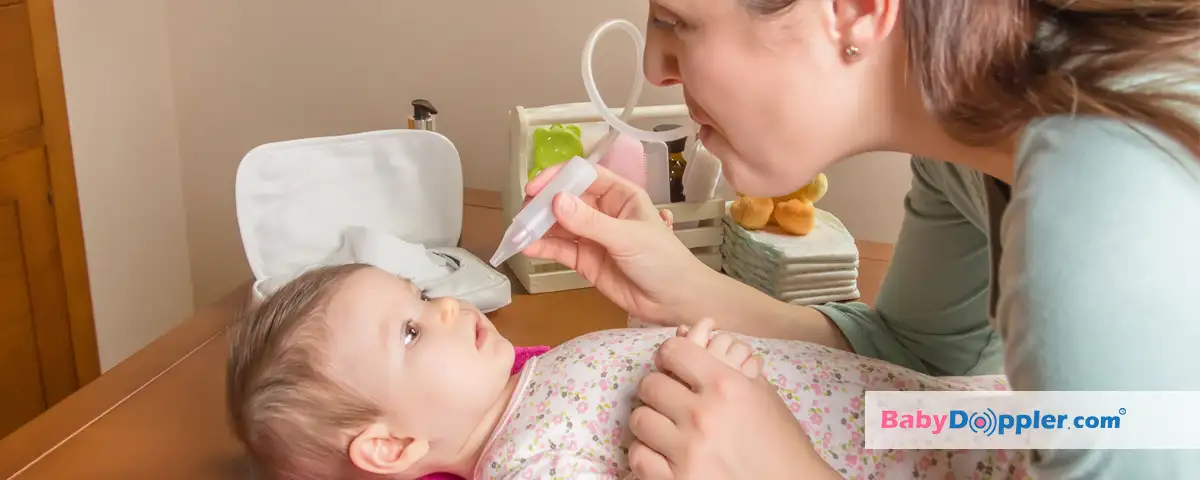Newborn babies can catch colds easily and a stuffy nose can deprive them of precious sleep. What’s worse is you baby just can’t blow his or her nose and it’s up to you as the mother to clear the excess mucous collecting in the nasal duct. Sucking out the mucous using a baby nasal aspirator is probably the easiest and safest method. Not to worry, there is no risk of the mucous going straight into your mouth as there is a mechanism to prevent that as well any backflow.
Clearing your baby’s stuffed nose
A heavy cold can leave your baby with a clogged nose making it rather difficult for it to breathe or feed. Whether your baby drinks breast milk or feeds on formula milk, swallowing with a blocked nose is an ordeal. Leaking mucous can also cause skin infections around the nostrils and near the upper lip.
Your best bet for clearing a blocked nose is a nasal aspirator, also known as a Swedish snot sucker, where you gently suck out the excess mucous. Unlike in a bulb aspirator where you squeeze the bulb and the resulting vacuum draws out the mucous. The former is preferable as it is gentler and easier on the baby.
Teaching the little one to blow its nose
Your newborn is too young to learn to blow its own nose. When your baby is a year or older, maybe you could try to teach it to blow its nose by holding a soft tissue to its nose and mimicking. Your baby may not get the hang of it right away, but will certainly learn it after a few trials. The trick lies in teaching them to close their mouths and blow at the same time.
Thinning out stubborn mucous with saline spray
Sometimes the mucous can be very thick and stubborn, making it difficult for you to suck it out. During such times it is better to use a few drops of saline spray that will help thin the mucous and make it easier to suck it out. You may also want to try using a humidifier which makes removal of thick or dry mucous easier.
Cleaning up after…
You need to remember to wash your hands with a mild soap after you are done with the mucous removal. Also, ensure that you clean your baby’s nose using a soft wet cloth to remove any residual mucous around the area. If the baby is older (2 years and above) you need to make them wash their hands as well after each cleaning session.

